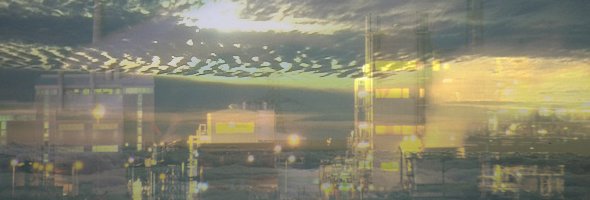|
|
 |
|
|
|
 |
| |
|
|
 |
Lower Atmosphere
Read more |
Tropospheric processes
If we talk about chemical reactions, most of us will probably have in mind big industrial plants and processes taking place in a laboratory. However, in the air we breath thousands of chemical reactions occur in every second in every litre. Most of them are oxidation processes or reactions started with the help of sunlight.
|
|
|
|
|
 |
 |
 |
|
Chemical and physical processes are going on everywhere in the air and in clouds. You can imagine the atmosphere as a big chemical plant continuously producing new molecules and destroying old ones, in cities as well as in nature.
Photomontage: Elmar Uherek
|
|
In this unit we will learn about the most important oxidising compounds, as ozone, OH and nitrate radicals and the chemical reactions they are involved in. We will learn what importance light has and also what sort of energy is transported through the air and where this energy goes. Greenhouse gases will be explained in more detail. Finally you will learn about the special reactions of ozone in the troposphere and in which way humans are influencing the chemistry of the lower atmosphere.
|
1. Main oxidants and observation
- Oxidation in the atmosphere
- Night-time conditions and chemistry
- Measurement techniques - spectroscopy
* Worksheet 1: OH, NO3 and oxidation
* Worksheet 2: light, absorption & colour
|
2. Radiation, greenhouse gases and greenhouse effect
- Earth's radiation budget and greenhouse effect
- Carbon dioxide and methane
- The water vapour feedback and clouds
* Worksheet 1: experiments with CO2 and water
* Worksheet 2: a greenhouse model
3. Ozone & fire
- Why is ozone dangerous? (reactions)
- Regulation of ozone abundance
- Vegetation fires and global importance
* Worksheet 1: ozone chemical properties
* Worksheet 2: model experiment on photosmog
* Worksheet 3: forest fires in Europe
4. Gases in the atmosphere
- Distribution of gases
- Concentration of gases in the air
|
 |
|
About this page:
author: Dr. Elmar Uherek - Max Planck Institute for Chemistry, Mainz
scientific reviewer: Dr. Mark Lawrence, Max Planck Institute for Chemistry, Mainz
revised and last published: 2004-05-05
|
|
 |
|









